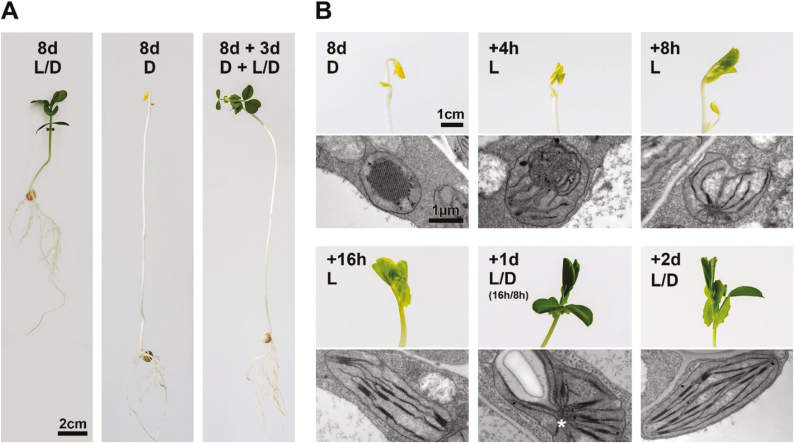Fig. 3.
Pea (Pisum sativum) de-etiolating under light/dark conditions. (A) Pea seedlings grown for 8 d under light dark (L/D) conditions (16 h of light at 40 µmol photons m−2 s−1–8 h of darkness) (left panel), darkness (D) (middle panel), 8 d of darkness followed by 3 d of L/D (right panel). Pea, which develops true leaves in darkness, as well as other hypogeal germinating plants, may be used as an alternative system to epigeal germinating Arabidopsis plants, which only develop cotyledons in the dark. As ‘maternal tissue’, cotyledons are formed by and undergo different developmental programing from true leaves. (B) De-etiolating pea. The upper panels show seedling shoot apices; the lower panels show transmission electron micrograph. Plants grown in darkness for 8 d were de-etiolated under light–dark conditions (16 h of light at 40 µmol photons m−2 s−1–8 h of darkness). Note that following the first 24 h of growth there is partial reformation of the PLB, indicated by the white asterisk.

